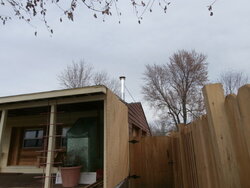Being an owner of the same stove, I agree with everything Huntingdog had to say in his post. I was a newbie too last year at this time and I went through some of the same issues you're having with questionable wood, hard starts and bad results because mostly I didn't know what the heck I was doing. Fortunately I didn't have any issues with my chimney. Getting those Condor temp gauges will really help you see how the stove is performing and will help shorten your learning curve overall. I really like the bypass damper on this stove for getting fast starts and I also leave the handle on too and have never had an issue with it opening on its own. Once you get the kinks worked out you're really going to like this stove.
Hi, Csween ... I do appreciate your input and great that you also have the Drolet Myriad. I know a lot more now than I did one year ago, because I've been listening and reading to others, etc., but, I have yet to feel in command of everything I'm doing from starting the initial fire to when to turn the air down.
However, I'm feeling a whole lot better than the 2nd and 3rd day with it, a few days ago, when I first posted. I bet it is a very nice stove once I've got everything together and understand the basics more through my own trial and error. I've got to work on the "wood" part, though, and still looking for handy advice on cordless chainsaws that aren't too heavy for a woman, but, no one has voiced anything on that (yet). Maybe kidding myself on cutting my own wood throughout the year, but, thought I'd at least explore the idea. If I don't, then I've got to find a reliable wood seller and then owning a wood moisture meter is an absolute must, before buying that wood. Agree? Thanks, again!





